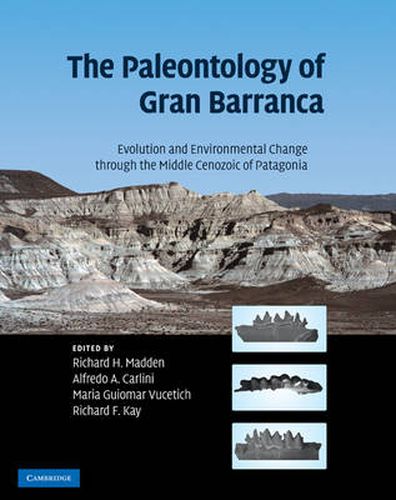Readings Newsletter
Become a Readings Member to make your shopping experience even easier.
Sign in or sign up for free!
You’re not far away from qualifying for FREE standard shipping within Australia
You’ve qualified for FREE standard shipping within Australia
The cart is loading…






Gran Barranca in Patagonia exposes the most complete sequence of middle Cenozoic paleofaunas in South America. It is the only continuous continental fossil record of the Southern Hemisphere between 42 and 18 million years ago, when climates at high latitudes transitioned from warm humid to cold dry conditions. This volume presents the geochronology of the fossil mammal sequence and a compilation of the latest studies of the stratigraphy, sedimentology, mammals, plants, invertebrates and trace fossils. It is also the first detailed treatment of the vertebrate faunal sequence at Gran Barranca, providing important new evidence about biotic diversity and evolution in the native species. A revised taxonomy allows a reevaluation of the origination and extinction of herbivorous mammals, marsupials, and xenarthrans, and the earliest occurrence of rodents and primates in southern latitudes. Academic researchers and advanced students in vertebrate paleontology, geochronology, sedimentology and paleoprimatology will value this wealth of new information.
$9.00 standard shipping within Australia
FREE standard shipping within Australia for orders over $100.00
Express & International shipping calculated at checkout
Gran Barranca in Patagonia exposes the most complete sequence of middle Cenozoic paleofaunas in South America. It is the only continuous continental fossil record of the Southern Hemisphere between 42 and 18 million years ago, when climates at high latitudes transitioned from warm humid to cold dry conditions. This volume presents the geochronology of the fossil mammal sequence and a compilation of the latest studies of the stratigraphy, sedimentology, mammals, plants, invertebrates and trace fossils. It is also the first detailed treatment of the vertebrate faunal sequence at Gran Barranca, providing important new evidence about biotic diversity and evolution in the native species. A revised taxonomy allows a reevaluation of the origination and extinction of herbivorous mammals, marsupials, and xenarthrans, and the earliest occurrence of rodents and primates in southern latitudes. Academic researchers and advanced students in vertebrate paleontology, geochronology, sedimentology and paleoprimatology will value this wealth of new information.